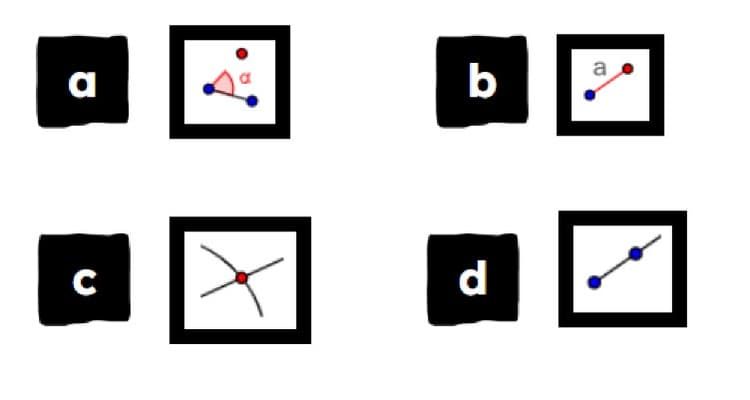

Constructing a triangle given two side lengths and the angle between them using a compass
I can construct a triangle given two of the required side lengths and the size of the angle between them.


Constructing a triangle given two side lengths and the angle between them using a compass
I can construct a triangle given two of the required side lengths and the size of the angle between them.
These resources will be removed by end of Summer Term 2025.
Switch to our new teaching resources now - designed by teachers and leading subject experts, and tested in classrooms.
These resources were created for remote use during the pandemic and are not designed for classroom teaching.
Lesson details
Key learning points
- The first side can be drawn accurately with a ruler
- The compass should be used to indicate potential positions for the remaining side
- A protractor should be used to accurately measure the desired angle
- The line to mark the required angle should be drawn to meet one of the potential positions for the remaining side
- All triangles with the same measurements are congruent
Keywords
Pair of compasses - A pair of compasses is a tool which can be used to draw circles and arcs. A pair of compasses is sometimes referred to just as a compass.
Congruent - If one shape can fit exactly on top of another using rotation, reflection or translation, then the shapes are congruent.
Common misconception
Some pupils may not recognise that they have constructed congruent triangles to one and another.
Use a piece of tracing paper to show that the triangles are congruent to each other.
To help you plan your year 11 maths lesson on: Constructing a triangle given two side lengths and the angle between them using a compass, download all teaching resources for free and adapt to suit your pupils' needs...
To help you plan your year 11 maths lesson on: Constructing a triangle given two side lengths and the angle between them using a compass, download all teaching resources for free and adapt to suit your pupils' needs.
The starter quiz will activate and check your pupils' prior knowledge, with versions available both with and without answers in PDF format.
We use learning cycles to break down learning into key concepts or ideas linked to the learning outcome. Each learning cycle features explanations with checks for understanding and practice tasks with feedback. All of this is found in our slide decks, ready for you to download and edit. The practice tasks are also available as printable worksheets and some lessons have additional materials with extra material you might need for teaching the lesson.
The assessment exit quiz will test your pupils' understanding of the key learning points.
Our video is a tool for planning, showing how other teachers might teach the lesson, offering helpful tips, modelled explanations and inspiration for your own delivery in the classroom. Plus, you can set it as homework or revision for pupils and keep their learning on track by sharing an online pupil version of this lesson.
Explore more key stage 4 maths lessons from the Loci and construction unit, dive into the full secondary maths curriculum, or learn more about lesson planning.

Equipment
Pair of compasses, ruler and protractor
Licence
Starter quiz
6 Questions




AB -
7.3 cm
CB -
9.6 cm
AD -
8.5 cm
Step 1 -
Use a ruler to draw line of length 5 cm. Label line A and B
Step 2 -
Set compasses to 6 cm and needle of compasses on A.
Step 3 -
Draw a circle of radius 6 cm, centre A.
Step 4 -
Repeat last 2 steps using B and 7 cm.
Step 5 -
Label one of the points where the 2 circles intersect as C.
Step 6 -
Use a ruler to join both A and B to C.
Exit quiz
6 Questions







